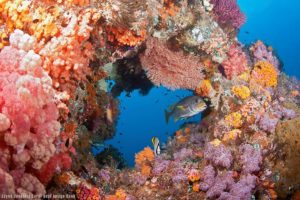What is the Keystone XL Pipeline?
The Keystone XL Pipeline was proposed by TransCanada in 2008 to serve as an extension of the Keystone Pipeline. The extension is used to transport Earth’s most polluted fossil fuels to market quickly.
The pipeline and tar sands:
Tar sands containing bitumen petroleum, which can be converted into fuel, pose a dangerous risk for the environment. The Keystone XL Pipeline, an extension of TransCanada’s existing Keystone Pipeline, is used to transport tar sands oil from Alberta, Canada’s boreal forest to refineries across the Midwestern United States and the Gulf Coast. Tar sands oil, unlike more conventional crude, is much more corrosive and acidic, increasing the chances of a pipeline leak. Unfortunately, these leaks often go undetected and spilled tar sand oil is difficult to clean up and holds a higher risk of exploding. These leaks are extremely dangerous to the environments they come into contact with, particularly wetland ecosystems. The pipeline would cross over 1,000 bodies of water, including Ogallala Aquifer in Nebraska, which is a key drinking and irrigation water source.
The pipeline and greenhouse gases:
The energy needed to transport the tar sands oil through the Keystone XL Pipeline will lead to a staggering 1.3 billion tons more of greenhouse gas emissions than a pipeline carrying more conventional crude over 50 years, according to the E.P.A. in 2015. Many top climate scientists stress the potentially damaging implications of fully developing the tar sands, including unleashing a vast reservoir of carbon into the atmosphere. This could be detrimental to the international goal of preventing a temperature increase of more than 3.6°F.
Controversy
Proponents of the Keystone XL Pipeline argue that the landlocked oil fields in Alberta need better access to overseas markets, extra oil from Canada decreases America’s Middle Eastern dependence, and the pipeline would boost the job market. According to Barack Obama, however, the extension would not affect the United States’ energy dependence, lower petroleum costs, or create long-term jobs. Additionally, the location of the pipeline poses a significant risk to vulnerable ecosystems on its path.
The pipeline and the executive branch:
The arguments regarding the Keystone XL Pipeline have extended into the executive branch of government. In 2014, the Obama administration announced an indefinite extension of their review of the pipeline, and, in 2015, ultimately rejected the pipeline, citing fear of undercutting America’s fight against climate change. Earlier this year, however, the Trump administration approved building the pipeline on U.S. land, despite looming court challenges and damaging environmental consequences.
Sources:
Denchak, Melissa. “What Is the Keystone Pipeline?” NRDC, 13 Apr. 2020, www.nrdc.org/stories/what-keystone-pipeline.
“Keystone XL Pipeline: Why Is It so Disputed?” BBC.com, 24 Jan. 2017, www.bbc.com/news/world-us-canada-30103078.
Labott, Elise, and Berman, Dan. “Obama Rejects Keystone XL Pipeline – CNNPolitics.” CNN, Cable News Network, 6 Nov. 2015, www.cnn.com/2015/11/06/politics/keystone-xl-pipeline-decision-rejection-kerry/index.html.
Brown, Matthew. “Trump Administration Approves Keystone Pipeline on U.S. Land.” PBS, Public Broadcasting Service, 23 Jan. 2020, www.pbs.org/newshour/nation/trump-administration-approves-keystone-pipeline-on-u-s-land.
Keystone Pipeline. ProQuest, Ann Arbor, 2015. sirsissuesresearcher, explore.proquest.com/sirsissuesresearcher/document/2257457321?accountid=66339.


